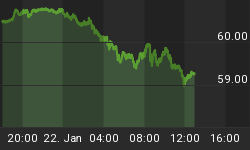Gold prices have been down ever since the precious metal hit all-time highs of nearly $1,900/oz eight years ago. That’s quite a long time, and a nice rally appears overdue. Well, one Wall Street punter thinks that time is just right to purchase the commodity. Bernstein says investors should look at gold and gold mining stocks to lower risk as a recession looms while stocks and bonds get hammered.
Specifically, Bernstein has been tracking two key measures that have now hit levels not seen since WWII: government debt and central bank gold purchases.
Record government debt
Governments across the globe have continued racking up mountains of debts with the worldwide tab through 2018 having crossed the $66-trillion level. While government debt in most developed economies has remained fairly stable at around $50 trillion since 2012, the US has seen its IOU surge 44 percent to $21.9 trillion over the period. America’s debt burden is set to get even heavier thanks to Trump’s tax bonanza. The IMF has forecast the country’s debt-to-GDP ratio will expand by another 8.9 percentage points between 2018-2023.
That said, the U.S. is in good company with debt levels in emerging market economies having jumped 50 percent to $15 trillion. Credit quality has also deteriorated markedly with emerging markets excluding China carrying an average rating of slightly below BB+, the lowest in nearly 15 years. Meanwhile, China’s debt bomb has already detonated with hordes of private firms folding up under Beijing’s supply-side structural reform plan.
What does all this mean?
We are simply ill-prepared for the ongoing monetary tightening as central banks across the world start mopping up excess liquidity. In fact, the Institute for International Finance(IIF) CEO Tim Adams says the situation is far more dire than that and claims we are worst prepared for a crisis in the post-war era.
Related: Markets Inch Lower As Investors Remain Cautious
Bernstein agrees with him and says those insanely high levels of debt “create a temptation to manufacture inflation”. Gold has traditionally performed well during periods of rising inflation, more so when inflation exceeds interest rates.
Central banks bingeing on gold
But it’s not just ballooning debt that supports a bullish gold thesis. The world’s central banks have been bingeing on gold with purchases hitting a 3-year high in November. In the third quarter of 2018, central banks spent approximately $5.82billion £4.49billion) to boost their reserves.
National banks bought more than 148 metric tons of gold from July 1 to September 30, 2018, a 22 percent rise compared to the previous year’s corresponding period. Russia was the biggest buyer, purchasing more than 92 tons of the metal mainly as a hedge against legal and political risks while the likes of Poland and Hungary stockpiled it as a hedge against potential currency crises. In case you are wondering why prices did not budge much, the World Gold Council (WGC) says the buying was unfortunately offset by heavy selling of gold-backed funds.
Bernstein says that central banks will keep stockpiling more gold as long the US share of global GDP keeps declining. Bernstein argues that gold is the most defensive commodity and investors will continue flocking to it during market downturns when other sources of “risk-free” returns underperform.

(Click to enlarge)
Source: CNBC
Time to buy gold?
For gold investors looking for a good entry point, there’s been quite a lot of talk lately about gold price charts entering a “golden cross”, with some pundits saying it’s a bullish signal. A golden cross occurs when the 50-day moving average crosses above the 200-day moving average.
Related: Hackers Tap Into The U.S. Electric Grid
But just how reliable is a golden cross when it comes to identifying entry points for gold? Well, not very reliable if historical records are any indication. Since 1970, gold has seen 20 golden cross 11 of which were bullish while 9 were bearish. That’s a very mixed track record that makes it unfit for use as a leading indicator for gold. SunshineProfits explains why the golden cross often does not work as expected.
Instead of focusing on this indicator, investors will be better served paying more attention to a shift in Fed policy. Gold stocks have made strong gains of an average of 172 percent whenever the Fed went from rate hikes to rate cuts. A shift in Fed policy has proven to be a much more reliable predictor of gold trends than the golden cross with gold stocks rallying an average of 172 percent in 11 out of 13 times this has happened over the past 65 years.
By Alex Kimani for Safehaven.com

















